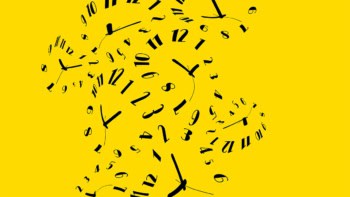Some principles of physics – including the first two laws of thermodynamics – seem to invite rebellion. Robert P Crease wonders why

Many principles of physics are of the form “If you do this, what will happen is that.” Newton’s second law, for example, says that the acceleration of a particular mass will be proportional to the force applied to it. Such principles imply that certain effects are practically impossible. A small number of principles, however, belong to a different category. These say, in effect, “That cannot happen.” Such principles imply that certain effects are physically impossible.
Notorious examples of the latter include the first two laws of thermodynamics. The first law says that energy cannot be created or destroyed (“You can’t win”), while the second can be stated in several forms, such as that heat cannot be transferred from a colder to a warmer body or that the entropy of a closed system always increases (“You can’t break even, either”). Other examples include Heisenberg’s uncertainty principle and the relativity principles regarding the impossibility of recognizing absolute velocity and the prohibition of faster-than-light travel.
Such principles often represent not “new physics” but deductions from other principles. What is different about them is their form. And to say that something is physically impossible tends to make scientists want to rebel.
No way
The physics of impossibility goes by several names. “Forget-about-it” physics is one; “noway” physics is another. Half a century ago, the mathematician and historian of science Sir Edmund Whittaker referred to “postulates of impotence”, which assert “the impossibility of achieving something, even though there may be an infinite number of ways of trying to achieve it”.
“A postulate of impotence”, Whittaker wrote, “is not the direct result of an experiment, or of any finite number of experiments; it does not mention any measurement, or any numerical relation or analytical equation; it is the assertion of a conviction, that all attempts to do a certain thing, however made, are bound to fail.”
Postulates of impotence thus resemble neither experimental facts nor mathematical statements true by definition. Nevertheless, such postulates are fundamental to science. Thermodynamics, Whittaker said, may be regarded as a set of deductions from its postulates of impotence: the conservation of energy and of entropy. It may well be possible, he argued, that in the distant future each branch of science will be able to be presented, à la Euclid’s Elements, as grounded in its appropriate postulate of impotence.
But no-way physics is important to science for another reason: it attracts contrarians. I am not talking about the endless attempts by frauds and naifs to get round the laws of thermodynamics by creating perpetual-motion machines. Rather, I mean serious physicists who find no-way physics a challenge to devise loopholes. In seeking these loopholes, they end up clarifying the foundations of the field.
Contrarian physicists played a key role in both the discovery and the interpretation of the uncertainty principle. In 1926 Werner Heisenberg was promoting his new matrix mechanics – a purely formal approach to atomic physics – by claiming that physicists had to abandon all hope of observing classical properties such as space and time. Pascual Jordan played the contrarian by devising a thought experiment to get round such claims.
Jordan argued that if one could freeze a microscope to absolute zero, then it should be possible to measure the exact position of an electron, say, or the time of a quantum leap. This seems to have inspired Heisenberg to think about the interaction between the observing instrument and the observed situation, which led him to the uncertainty principle. Jordan, the contrarian, forced Heisenberg to think operationally rather than philosophically, and to clarify the physics of the situation.
Another example of contrarian physics was James Clerk Maxwell’s thought experiment involving a tiny creature who operates a small door in a partition inside a sealed box. By opening and shutting the door, the “demon” – as it was later called – lets all the faster-moving molecules into one side of the partition, violating the second law of thermodynamics by getting heat to flow to that side. The discussion of this thought experiment helped to clarify the then-mysterious concepts of thermodynamics.
The critical point
Heisenberg once wrote, “Almost every progress in science has been paid for by a sacrifice, for almost every new intellectual achievement previous positions and conceptions had to be given up. Thus, in a way, the increase of knowledge and insight diminishes continually the scientist’s claim on ‘understanding’ nature.”
Heisenberg is overstating the point: surely the advance of science involves developing more subtle and complex concepts that encompass the simpler existing ones. But these more subtle and complex concepts are often produced by those who are dissatisfied by the prospect of having to make the kind of sacrifice Heisenberg mentions.
Dissatisfaction is a powerful driving force in science, and it can arise in many ways. Sometimes it springs from a scientist’s sense that a confusing heap of experimental data can be better organized. At other times it arises from the feeling that a theory is too complicated and can be simplified, or that its parts are not fitting together properly. Still other dissatisfactions arise from mismatches between a theory’s predictions and experimental results.
No-way physics produces a special kind of dissatisfaction, involving the collision of science with our hopes and dreams – of limitless energy, of superluminal travel, of pinning things to specific places at specific times. Humans seem hard-wired to have such hopes, and hard-wired to balk at the science that dashes them. Small wonder then that no-way physics leaves them dissatisfied. But science wins in the end.



